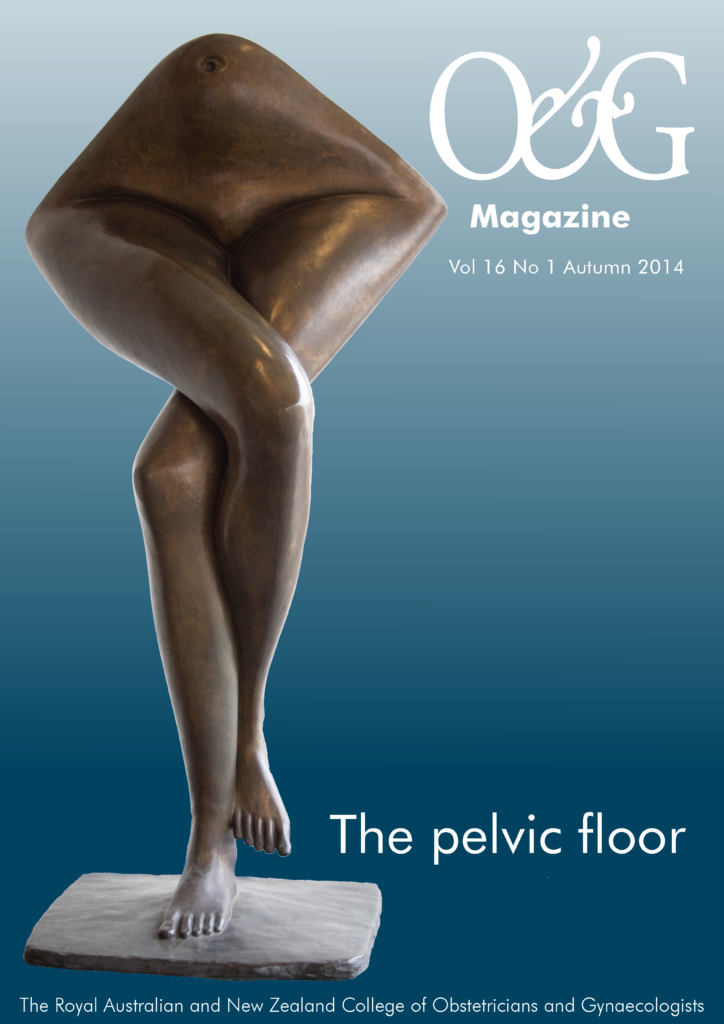There’s more to training the pelvic floor muscles than the odd tight squeeze.
The ‘pelvic floor muscles’ (PFM) could use a makeover, a revamp or rebranding, to better reflect the positive functions that they perform for us all and what they are capable of achieving if retrained under expert guidance. Concerning though the national statistics are, most people are not incontinent – and nor do they have other disorders associated with poor pelvic floor muscle control. Even symptomatic people are usually not so for their entire adult lives. As the only transverse load-bearing muscles in the body, the PFM deserve more applause for the roles that they play in pelvic organ support, continence and sexual function.
In Western culture, strong abdominal muscles are presented in the media as de rigueur for health, fitness and, most importantly, for attracting a mate – just look at the cover of Men’s Health magazine (any issue). Funnily, the rectus abdominis are afforded the catchy tag of ‘abs’, the similarly sought-after pectoralis major – ‘pecs’, and yet the sexiest muscles in the whole body have the rather dreary epithet ‘pelvic floor’. Sartorial selection can do wonders for the neglected or ageing abs and pecs, quietly concealing them from all but oneself and one’s lover and (on occasions) the GP. Incontinent women sometimes resort to wearing dark trousers, but there are more serious sequelae for neglected, ageing or malfunctioning PFM. Prolapse, urinary incontinence, anal incontinence, defaecation dysfunction and pelvic pain can cause private misery, social isolation and diminished quality of life.
As they are unseen and only ever linked to embarrassing conditions, the PFM are relatively unmarketable. The mention of the term ‘pelvic floor’ brings guilt (I never do those exercises) or shame (I have a problem and I should have done those exercises) rather than positivity and hope. How can we rebrand the PFM? Even we health professionals, who don’t mind a bit of Latin, cannot agree upon nomenclature. Name a pelvic structure, attach the suffix ‘-ygeus’ or ‘-alis’, and there’s a fair chance you’ll find an author including it under the mantle of ‘pelvic floor’. Anyone who passed first-year anatomy can name the component muscles that form quadriceps femoris – even if they have not been clinically intimate with a thigh for decades. It’s possible to work very close to the PF muscles on a daily basis and not be on first name terms with them or know what they do.
Enter the physiotherapist with training in continence and pelvic floor rehabilitation. It is very often necessary for the physiotherapist to address pelvic symptoms beyond those stated on the doctor’s referral letter. Many patients have symptoms in a pelvic compartment that is not their referrer’s specialty and therefore fail to mention the problem to their doctor. A physiotherapist’s scope of practice is much greater than most people realise and we know our limitations too; recommending medical, surgical and dermatological reviews where appropriate.
Women often do not know where their pelvic floor muscles are. A woman who clutches her abdomen and states, ‘I just draw everything up’ is very likely to be increasing her intra-abdominal pressure (via abdominal muscle recruitment and breath holding), sending her pelvic organs and pelvic floor in the wrong direction. She may have tried exercises but not seen any results: ‘I’ve tried pelvic floors and they don’t work’. There is abundant evidence for including supervised pelvic floor muscle training (PFMT) in first-line management of stress, urge and mixed urinary incontinence.1 The evidence for the role of PFMT in the management of pelvic organ prolapse symptoms is compelling.2 Even when a woman chooses a surgical solution, the role of PFMT in supporting surgical repair is clear.3 The research tells us that PFMT is effective, so if your patient states that the exercises did nothing for her, what’s going on?
Box 1. Case Study – ‘Jane’
Jane, aged 31 (G2P2), presented with a five-month history of worsening urinary urgency, burning, discomfort, frequency and nocturia. Her bladder never felt empty, she had post-void leakage and mild stress urinary incontinence (SUI). She complained of pelvic dragging and intermittent vaginal bulge. She experienced deep dyspareunia.
Jane’s babies were born at term by normal vaginal delivery and were each <3500g. She had been referred to an obstetrician and gynaecologist six weeks after her first delivery complaining of pelvic organ prolapse (POP). She was assessed as having a ‘small cystocele and rectocoele’ and was advised that her symptoms would improve after weaning the baby – as they did. POP symptoms recurred after second delivery, but were less bothersome and resolved more quickly. Jane is a pre-school teacher. She frequently lifts her own small children at home, walks for exercise and her BMI is 22.
Medical/surgical history
Left developmental hip dysplasia, which required surgery as a small child. Since onset of urinary and prolapse symptoms, Jane has tried PFM strengthening exercises. She is not sure if her technique is correct as there has been no improvement.
Assessment
- Midstream specimen of urine negative.
- Urinary tract/pelvic ultrasound – nothing abnormal detected. Bladder volume 600cc. Post void residual – negligible.
- Bladder diary: 19 voids per 24 hours (average). Minimum voided volume: 10mL, maximum voided volume: 400mL. Persistent feeling of bladder fullness/urge after voiding. Nocturia x3. Appropriate fluid intake.
- Anorectal function – prone to constipation. Bristol stool form scale: type 2.
- PV examination: Unable to provoke POP in any compartment. Normal perineal muscles. No puborectalis avulsion palpable. Overactive levator ani – very tense at rest with modified Oxford grade 2 contraction – unable to relax muscles or repeat contraction. Left obturator internus (OI) hypertonicity and tenderness, with palpable myofascial trigger points.
Not all pelvic floors are equal
A one-size-fits-all approach is not helpful. PFM are assessed (by PV and, if necessary, via digital rectal examination) for strength, flexibility, coordination and control. At first touch the resting tone or feel of the muscles offers some clues. Are the muscles flaccid or hypertonic or normal at rest? Does muscle palpation elicit pain? Is there palpable puborectalis avulsion? How strongly can the PFMs contract? How long does the contraction last and how many times can it be repeated? Does the pelvic floor relax fully after contracting?
PFMT begins with motor skill training. It is very difficult for patients to self-monitor, particularly when the PFM are very weak or very tight, as there may be little or no proprioception in these situations. Correct technique is essential, otherwise PFMT is at best ineffective, and may be detrimental.
Neuropraxia, lumbar spine pathology, upper motor neurone lesions or obesity? These are some of the situations that PFMT cannot always completely overcome.
Not all lifestyles are equal
Specificity is essential in PFMT. What forces does this woman’s pelvic floor have to withstand domestically, occupationally, recreationally? Does she have a chronic cough? What’s her general fitness like and what does she do to maintain it? These considerations enable the physiotherapist to shape PFMT to the individual.
Strength, coordination, timing, control, endurance – if the muscles are not trained appropriately, PFMT will not achieve its full potential. Physiotherapists are able to judiciously apply adjunctive therapies for example, neuromuscular electrical stimulation (NMES) and biofeedback devices (such as real-time ultrasound, manometry) when indicated.
Not all patient adherence is equal
If your patient states PFMT failed, clarify that rehabilitation of the PFM was supervised by an appropriately trained physiotherapist, exercise dosage was applied as recommended, they attended review appointments and gave themselves sufficient time to achieve results (12–26 weeks). The benefits of physiotherapist-supervised PFMT are illustrated in the case study (see Box 1).
It would be great to see a ‘Jane’ or two on television, or smiling from a magazine cover… ‘I cured myself with PFM training! I no longer worry about my bladder all day and I’m enjoying my life again!’ A round of applause…for the (unfortunately named) ‘pelvic floor’.
Pelvic floor rehabilitation program for Jane
- PFM ‘down-training’ program – Jane was not expected to strengthen her PFM until she learned the motor skill of releasing/relaxing PFM contractions.
- Digital stretching of puborectalis/pubococcygeus and release of trigger points in left obturator internus (PV). Re-education of PFM exercise technique during examination.
- Bladder retraining. Taught techniques for dampening detrusor contractions by activating posterior tibial nerve4 and with appropriate recruitment of PFM. Guided through gradual lengthening of time between voids.
- Soluble fibre supplement, daily. Posture and dynamics for defaecation corrected.
- PFMT to improve levator strength and control after successful down-training component. Eventually achieved grade 4 modified Oxford.
- Treatment of left hip complex to allow full rehabilitation of OI.
- Maintenance program, including functional bracing of PFM (to minimise area of levator hiatus during increases in intra-abdominal pressure).
Outcomes for Jane
At discharge, after five treatments over eight weeks, Jane was voiding eight times per 24 hours, with nocturia x0-1. No bladder irritation or POP symptoms. Dyspareunia had resolved completely. Jane was very happy with results of physiotherapy and left with a maintenance program of exercises and lifestyle advice.
Points of interest
- Pelvic floor physiotherapy does not begin and end with levator ani strengthening.
- Obturator internus hypertonicity is often associated with urinary symptoms of urgency and frequency, yet the mechanism is not perfectly understood.5
- Jane’s bothersome POP symptoms could not be explained by examination and did not recur at all during treatment period.
- Jane was highly motivated to overcome her distressing symptoms and adhered to her physiotherapy program with great dedication.
References
- Dumoulin C, Hay-Smith J. Pelvic floor muscle training versus no treatment, or inactive control treatments, for urinary incontinence in women. Cochrane Database of Syst Rev 2010 Jan 20; (1):CD005654. doi: 10.1002/14651858.CD005654.pub2.
- Hagen S, Stark S, Glazener C, Dickson S, Barry S, Elders A, Frawley H, Galea M, Logan J, McDonald A, McPherson G, Moore KH, Norrie J, Walker A, Wilson D. Individualised pelvic floor muscle training in women with pelvic organ prolapse (POPPY): a multicentre randomised controlled trial. The Lancet. 2013 Early online publication; doi: 10.1016/SO140-6736(13)61977-7.
- Vakili B, Zheng YT, Loesch H, Echols KT, Franco N, Chesson RR. Levator contraction strength and genital hiatus as risk factors for recurrent pelvic organ prolapse. Am J Obstet Gynecol. 2005 May: 192(5):1592-8.
- Stav K, Leibovici D, Yoram SI, Ronny O, Zisman A. Self-induced plantar-flexion objectively reduces wave amplitude of detrusor overactivity and subjectively improves urinary urgency: A pilot study. Neurourol Urodyn. 2013 Sep 20. doi: 10.1002/nau.22493.
- Bassaly R, Tidwell N, Bertolino S, Hoyte L, Downes K, Hart S. Myofascial pain and pelvic floor dysfunction in patients with interstitial cystitis. Int Urogynecol J. 2011 Apr22 (4):413-8. Early online publication; doi: 10.1007/s00192-010-1301-3.





Leave a Reply